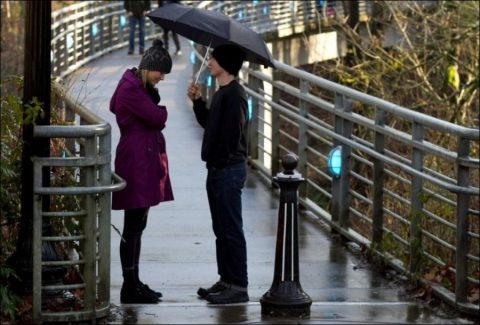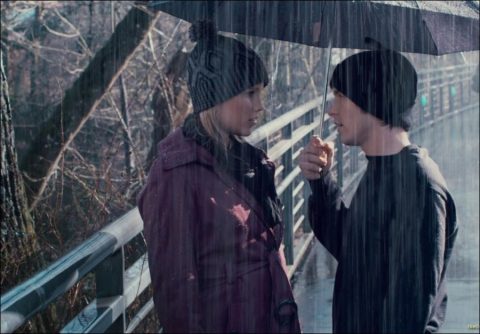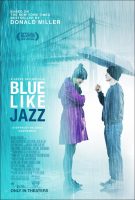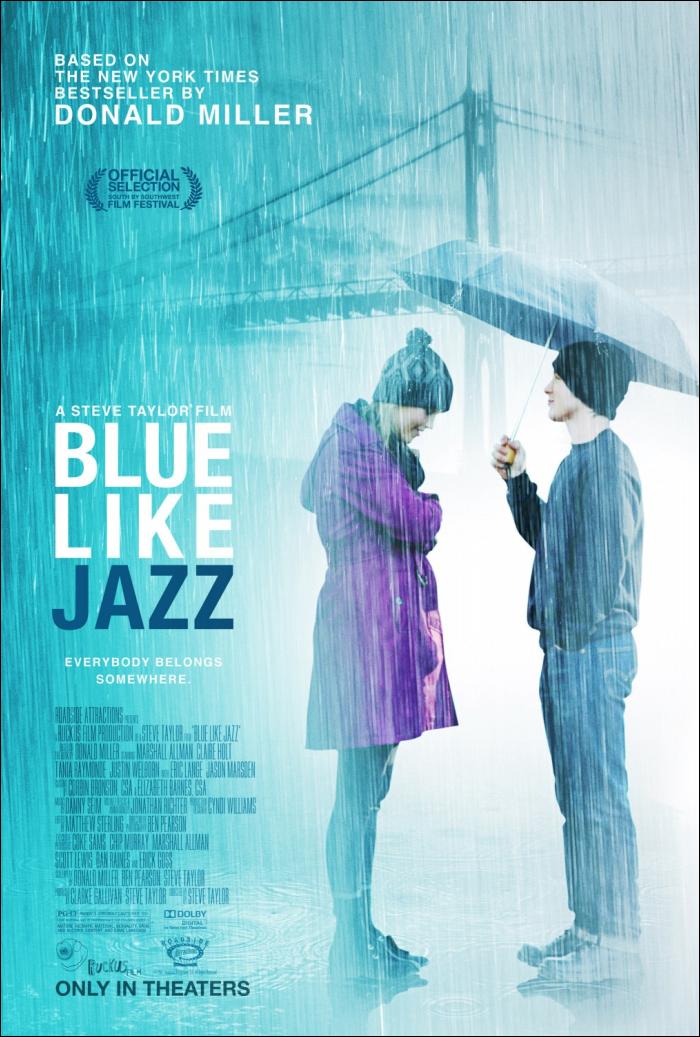Blue Like Jazz movie review. Donald Miller – the real Donald Miller – soared to fame when his collection of memoirs and essays entitled “Blue Like Jazz: Nonreligious Thoughts on Christian Spirituality” was released in 2003. How on earth the book could be adapted into a narrative feature is a question anybody who has read it will probably be asking. Whether you’re a familiar fan or not, you should go in knowing this: “Blue Like Jazz” the movie is not “Blue Like Jazz” the book.
In a necessary effort to create a narrative of Miller’s work, themes and scenes from the essay collection have been streamlined with creative liberty throughout the on-screen journey. The end result is a film with a fictional plot and characters, whose spirit is imaginatively inspired by Miller’s writings. Because of this – though I have read the book – I’ll be writing this review solely on the basis of the film.
Don Miller is a kind, straight-laced Christian teenager from Houston, Texas. He volunteers for the youth group at his Baptist church, and he helps his single mother out around the house. He plans on going to a private Christian university, but a series of unexpected events is about to shift his entire perspective on anything bearing the “Christ” prefix.
Shortly before his planned departure, Don pays a visit to his father, who lives a starkly different lifestyle than Don and his mother. Sitting outside of his trailer, father Miller cracks open a beer and condescendingly urges Don to get outside his church-centric bubble. He pushes his wishes by revealing that he’s “pulled some strings,” and gotten Don enrolled into Reed college…allegedly the most “Godless” school in America.
At first, Don is reluctant, brushing the gesture off as a petty way to reconcile for years of abandonment and missed child support bills. Then he discovers his mother is having an affair with the youth minister from his church. Devastated, and in a heated fury of rebellion and confusion, Don takes his father’s offer.
In his first months at Reed, he starts changing – rapidly. Don is befriended by Lauren, the spunky bi-sexual who urges him to keep his background in the closet. He meets “The Pope,” a wild, funny and unpredictable super-senior who not only doesn’t believe in God, but also vehemently rejects the very idea of a man in the sky capable of allowing so much hurt and destruction in the world. He also meets Penny, a beautiful and passionate Christian activist who comes off abrasive, but has a definite vulnerability that attracts Don’s attention.
Reed College is a wild place; the campus that feels like a cocktail of “Portlandia” sketches cut with,mischievous, mildly pretentious intellectuals. Put a sheltered southern Baptist teen in a place like this, and his world will most certainly be rocked. Such is the case with Don. Reed brings him new friends and good times, but with rising doses of disillusionment with his family, his faith, and above all, his undeniable lack of identity and purpose.
Deep down, Don is dealing with something most of us go through at some point. Remove the religious elements here, and you’ll find a story about a person who is caught in a chasm between paradigms. His peers urge him to look at the world in a different way, which is something he’s never taken the time to do before.
In watching “Blue Like Jazz,” I felt a bizarrely personal connection to the protagonist. It was always funny to me how my high school teachers and administrators considered it their unanimous duty to “prepare students for college.” Like Don, I grew up in ultra-suburban Texas. I went to church every week, even volunteering with the youth group. And like Don’s, my community was overwhelmingly conservative.
So when a multitude of foundations I’d lived with for 18 years were stripped away from me the second I stepped foot on a college campus, I was dazed and confused. Suddenly my world was vacant of an immediate group of superiors telling me I wasn’t allowed to drink, or I wasn’t allowed to engage in sexual exploits, or I wasn’t allowed to be out past midnight (yeah, I had it rough). I was removed from my family, friends and mentors. I was on my own in a strange, hazy, completely unfamiliar world. For the first time, I was given a gift and a curse that would stick with me forever: complete personal responsibility.
Watching Don grind through this exciting, yet painful and vulnerable evolution in his new environment engenders empathy and admiration. The numerous similarities between his experiences and mine speak not just to our religious comparability, but to the human experience of having an entire ideology cut down as naivety. After placing so much conviction and confidence in a way of life, the mind reels when it is challenged so bluntly. It is easy to feel hurt, confused, and personally injured – as if external perspective is an insult on your own character or personality. But it can also lead to great communication, revelation and epiphany.
Understandably, Don felt all of that. And it resonates – seeing this guy at a pivotal transition, slowly moving from the child-like comfort of his old and incomplete faith for a new, mature comprehension of that faith and his surrounding world. Through having tender ideals challenged, his simple rock of faith is transformed under extreme pressure and stress into a diamond-like revelation, bringing him to a truer understanding of Jesus, and opening his ears and heart to the concerns and philosophy of those who thought differently.
Though “Blue Like Jazz” may wander around a bit in trying to do so many things at once, the things it tries are nonetheless virtuous – and many succeed. The rockier moments in the script are smoothed by a wonderful cast, and director Steve Taylor should be commended for working an impressive feat with such a thin, microscopic budget (mostly provided by Kickstarter). Despite its imperfections, the film has an incredible heart that shines with earnest humility, presenting strong, provocative messages for all viewers.
“If the point of life is the same as the point of a story, the point of life is character transformation. If I got any comfort as I set out on my first story, it was that in nearly every story, the protagonist is transformed. He’s a jerk at the beginning and nice at the end, or a coward at the beginning and brave at the end. If the character doesn’t change, the story hasn’t happened yet. And if story is derived from real life, if story is just condensed version of life then life itself may be designed to change us so that we evolve from one kind of person to another.”
Blue Like Jazz (2012)
Directed by: Steve Taylor
Starring: Marshall Allman, Claire Holt, Tania Raymonde, Justin Welborn, Eric Lange, Jason Marsden, William McKinney, Jenny Littleton, David Alford, Jeff Obafemi Carr, Matt Godfrey
Screenplay by: Donald Miller
Production Design by: Cyndi Williams
Cinematography by: Ben Pearson
Film Editing by: Matthew Sterling
Costume Design by: Amy Patterson
Art Direction by: Jamey DiDomenico, David Hewlette
Music by: Danny Seim
MPAA Rating: PG-13 for mature thematic material, sexuality, drug and alcohol content, and some language.
Distributed by: Roadside Attractions
Release Date: April 13, 2012
Views: 314








